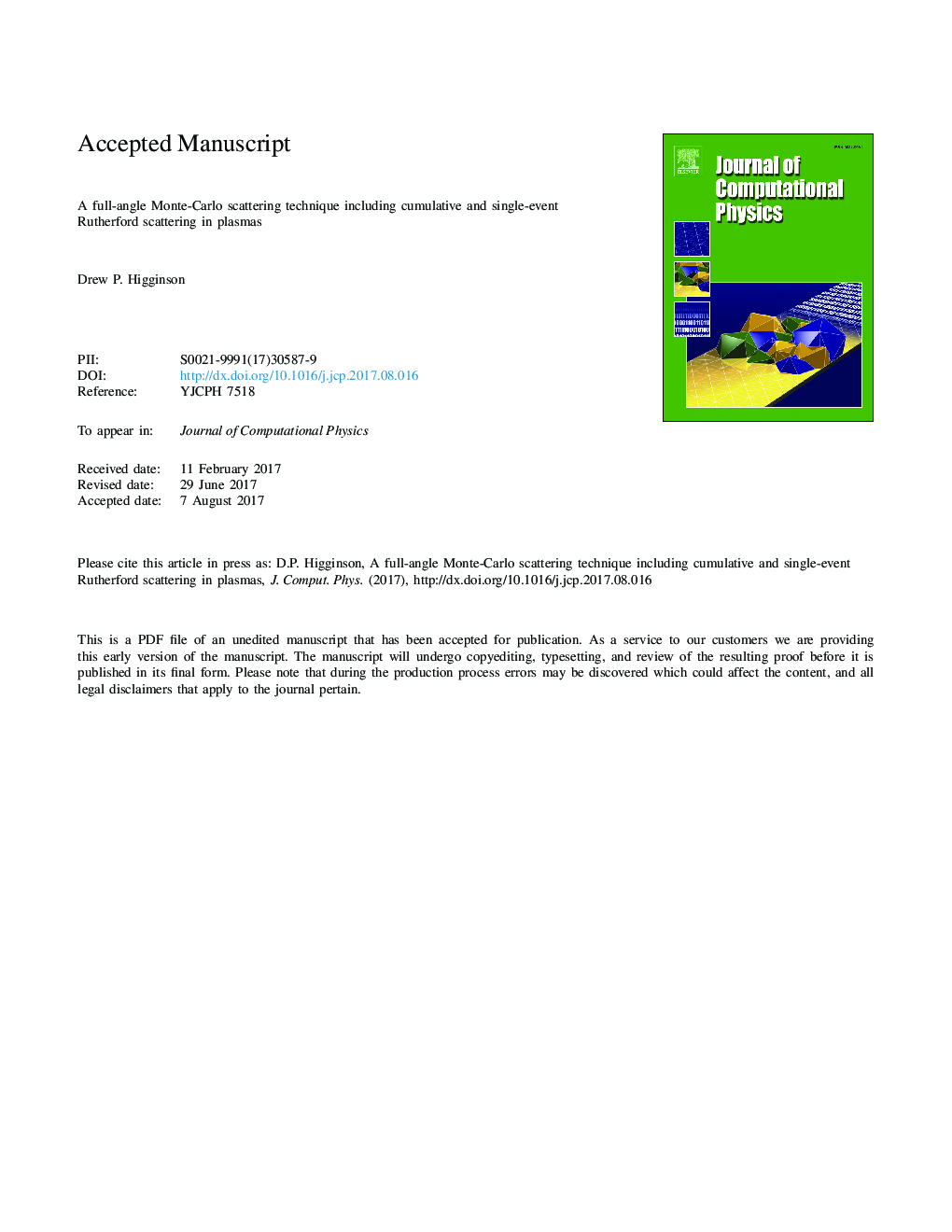| Article ID | Journal | Published Year | Pages | File Type |
|---|---|---|---|---|
| 4967241 | Journal of Computational Physics | 2017 | 20 Pages |
Abstract
We describe and justify a full-angle scattering (FAS) method to faithfully reproduce the accumulated differential angular Rutherford scattering probability distribution function (pdf) of particles in a plasma. The FAS method splits the scattering events into two regions. At small angles it is described by cumulative scattering events resulting, via the central limit theorem, in a Gaussian-like pdf; at larger angles it is described by single-event scatters and retains a pdf that follows the form of the Rutherford differential cross-section. The FAS method is verified using discrete Monte-Carlo scattering simulations run at small timesteps to include each individual scattering event. We identify the FAS regime of interest as where the ratio of temporal/spatial scale-of-interest to slowing-down time/length is from 10â3 to 0.3-0.7; the upper limit corresponds to Coulomb logarithm of 20-2, respectively. Two test problems, high-velocity interpenetrating plasma flows and keV-temperature ion equilibration, are used to highlight systems where including FAS is important to capture relevant physics.
Keywords
Related Topics
Physical Sciences and Engineering
Computer Science
Computer Science Applications
Authors
Drew P. Higginson,
